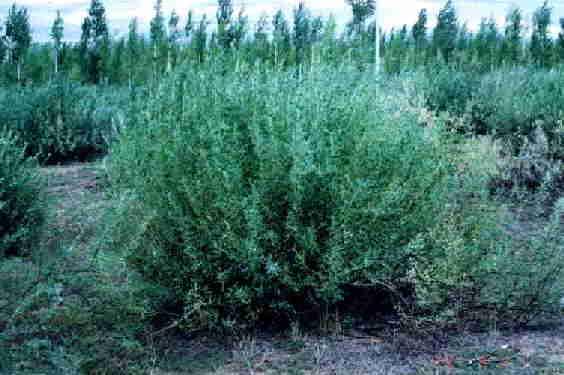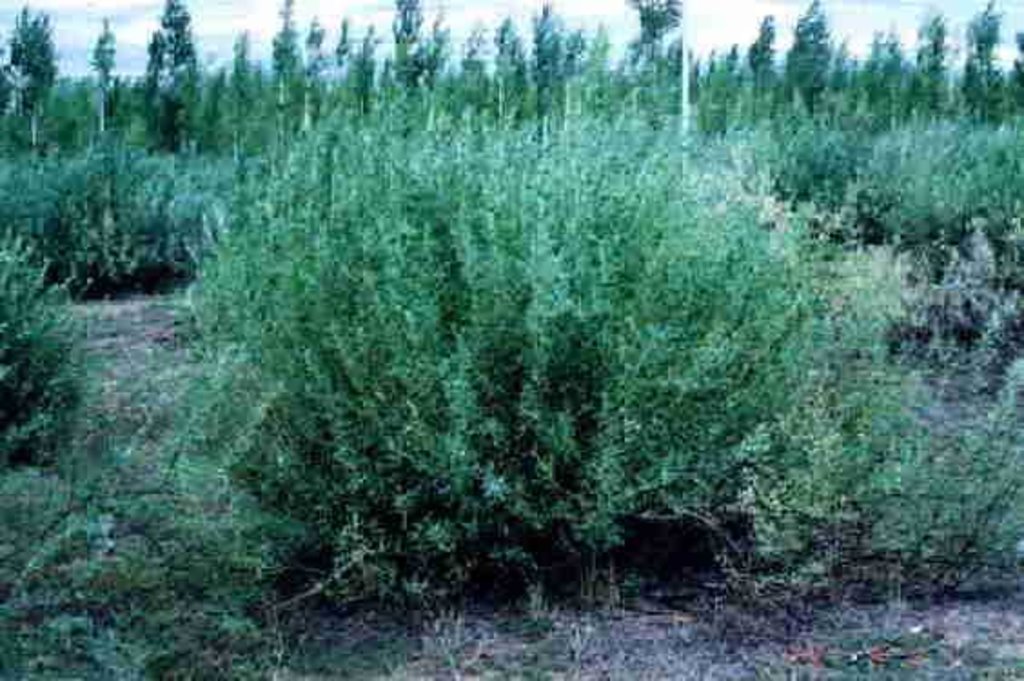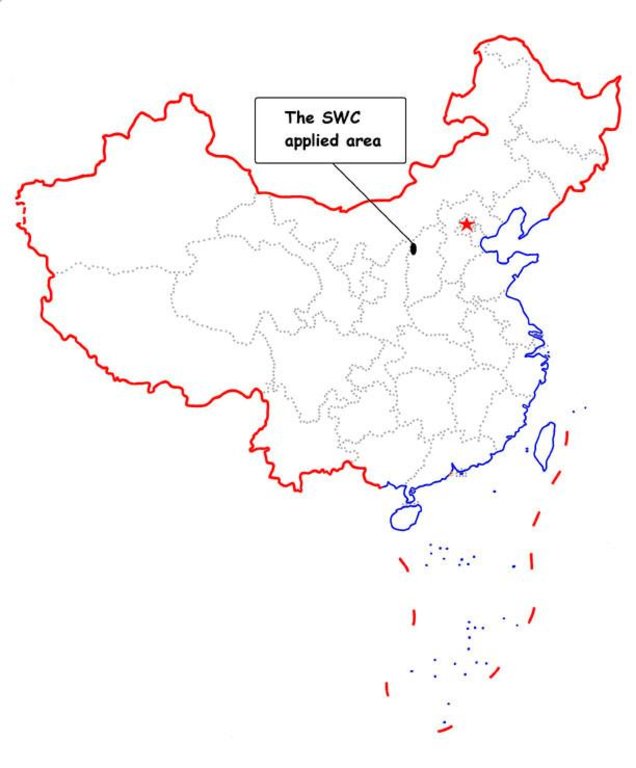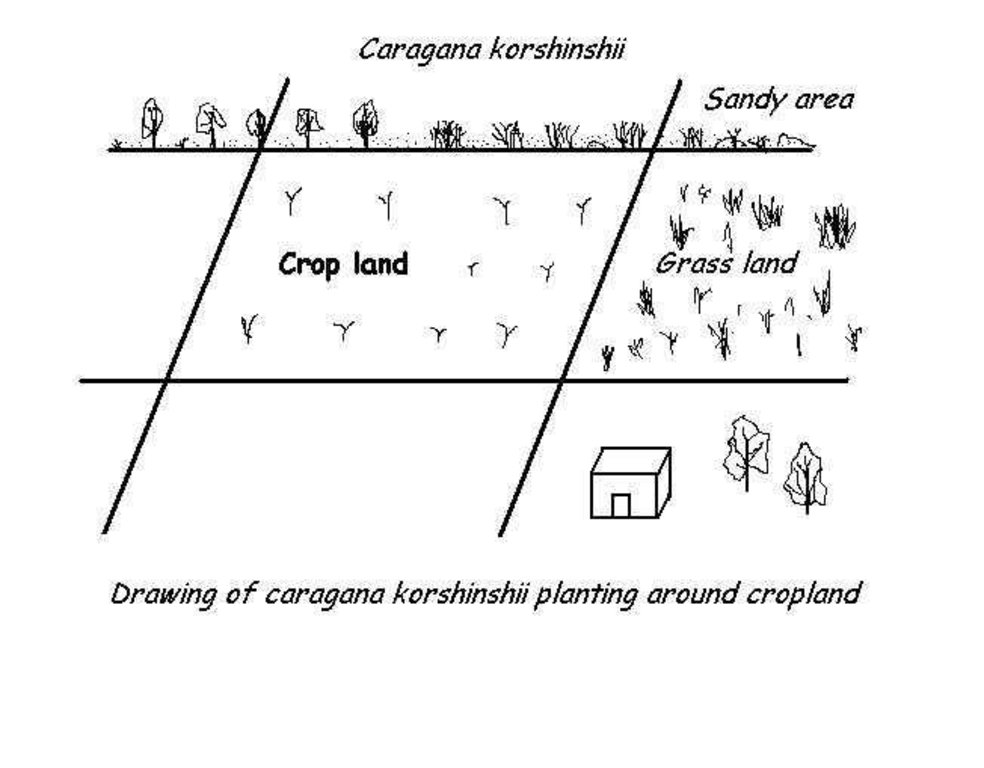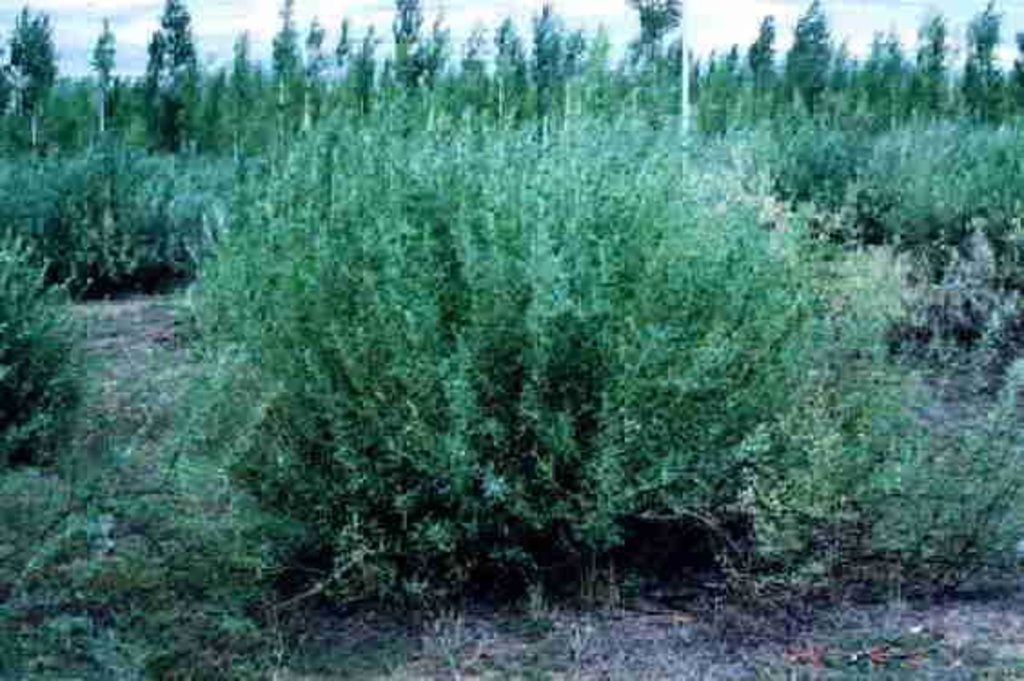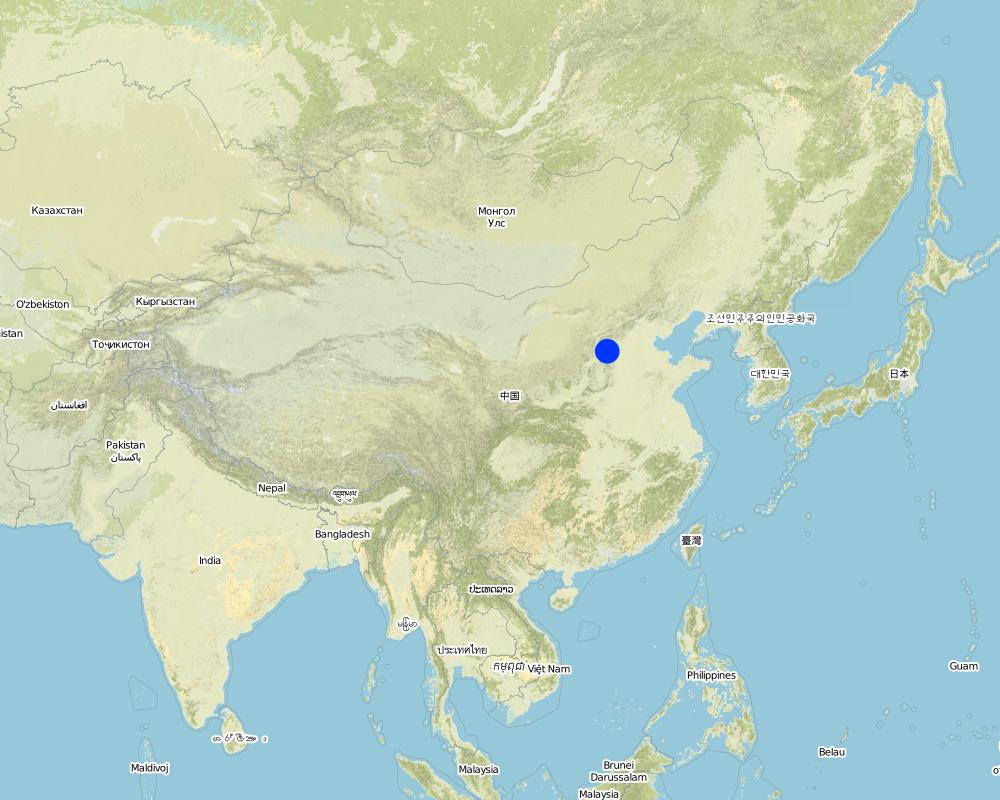Caragana Korshinskii Planting - a SWC vegetation technology [Chine]
- Création :
- Mise à jour :
- Compilateur : Jinsheng FU
- Rédacteur : –
- Examinateur : David Streiff
approaches_2395 - Chine
Voir les sections
Développer tout Réduire tout1. Informations générales
1.2 Coordonnées des personnes-ressources et des institutions impliquées dans l'évaluation et la documentation de l'Approche
Spécialiste GDT:
Xie Mingshu
(8610) 62338043
Department of soil and water conservation, Beijing Forestry University
Chine
Nom du ou des institutions qui ont facilité la documentation/ l'évaluation de l'Approche (si pertinent)
Department of Resources and Environmental Science, Beijing Normal University (Department of Resources and Environmental Science, Beijing Normal University) - Chine1.3 Conditions relatives à l'utilisation par WOCAT des données documentées
Le compilateur et la(les) personne(s) ressource(s) acceptent les conditions relatives à l'utilisation par WOCAT des données documentées:
Oui
1.4 Références au(x) questionnaire(s) sur les Technologies de GDT

Caragana Korshinskii Planting a kind of SWC vegetative … [Chine]
Caragana korshinskii, a kind of perennial shrub, is used to protect soil from water and wind erosion, rhizobium in its root can increase soil fertility.
- Compilateur : Jinsheng FU
2. Description de l'Approche de GDT
2.1 Courte description de l'Approche
SWC decision makers, I.e. approach planners, lead local people to plant caragana korshinskii in the areas of serious water and/or wind erosion by means of combined inputs from government, locals and social loan etc.
2.2 Description détaillée de l'Approche
Description détaillée de l'Approche:
Aims / objectives: The most important factor that hinders agricultural development in the Loess Plateau is soil and water loss. Many measures have been taking to conserve soil and water resources. Here is one of them using caragana korshinskii as one kind of SWC vegetation approach.
Methods: With its long roots, caragana korshinskii can improve soil infiltration and extract water from deep soil layer. It can also protect soil from water and wind erosion because it is tightly fixed in the soil. It has rhizobium in its roots to improve soil fertility. Besides, its branch has economic value. To carry out this approach, planners lead local farmers to plant caragana korshinskii in the areas of the serious water and/or wind erosion. Before planting, dipping selected seeds in brine with 1% concentration, and then moving them in warm water for about 24 hours to make them easier germinating. Caragana korshinskii can be planted in holes. Autumn is the best season for seeding, but if there is much rain in Spring, it is also ok. In the first three years, young plants are very frail. They should be protected from sheep eating and cutting. After four years, the branches of caragana korshinskii above ground can be cut according to their utilization. The more you cut the better they grow.
Role of stakeholders: Besides government leaders, local land users are also the most important participants, they accomplish most of planting and maintaining work. The Research Institute is another key participant, they provide the SWC knowledge and technology.
Other important information: Caragana korshinskii has many other advantages besides ecological benefits. It has many economic values, such as supplying forage for sheep and fuel for local residents, supplying raw material for paper making, supplying green manure and improving soil quality. Finance is mainly from government, partially from loan and local input(labor).
2.3 Photos de l'approche
2.5 Pays/ région/ lieux où l'Approche a été appliquée
Pays:
Chine
Région/ Etat/ Province:
Shanxi
Map
×2.6 Dates de début et de fin de l'Approche
Indiquez l'année de démarrage:
1960
2.7 Type d'Approche
- traditionnel/ autochtone
2.8 Principaux objectifs de l'Approche
The Approach focused mainly on SLM with other activities (Sheep forage, paper making, fuel, green manure etc.)
Controlling water and/or wind erosion, preventing sand and dust storm.
The SLM Approach addressed the following problems: Water and/or wind erosion, inadequate fodder, poor local agricultural and economic development.
Caragana korshinskii is one of the most drought endurable shrubs. Once planted, caragana korshinskii grows very fast.
2.9 Conditions favorisant ou entravant la mise en œuvre de la(des) Technologie(s) appliquée(s) sous l'Approche
normes et valeurs sociales/ culturelles/ religieuses
- entrave
People there seldom care about the environment
Treatment through the SLM Approach: Education, propagandizing
disponibilité/ accès aux ressources et services financiers
- entrave
There is not enough money
Treatment through the SLM Approach: National subsidy, loan, collecting money from public
cadre juridique (régime foncier, droits d'utilisation des terres et de l'eau)
- entrave
Lack of corresponding acts
Treatment through the SLM Approach: Enforcing legislation
The existing land ownership, land use rights / water rights hindered a little the approach implementation The state has ownership of the land resources, land users can only lease the land for a period of time, they worry about their land would be transferred to others.
connaissances sur la GDT, accès aux supports techniques
- entrave
inadequate
Treatment through the SLM Approach: Learn from SWC specialists, introduce into new acquainted person
3. Participation et rôles des parties prenantes impliquées dans l'Approche
3.1 Parties prenantes impliquées dans l'Approche et rôles
- exploitants locaux des terres / communautés locales
Working land users were work equally divided between men and women (including all the local land users and government politicians)
Existing groups of land users
- gouvernement national (planificateurs, décideurs)
3.2 Participation des exploitants locaux des terres/ communautés locales aux différentes phases de l'Approche
| Participation des exploitants locaux des terres/ communautés locales | Spécifiez qui était impliqué et décrivez les activités | |
|---|---|---|
| initiation/ motivation | interactive | public meetings |
| planification | aucun | |
| mise en œuvre | interactive | casual labour |
| suivi/ évaluation | auto-mobilisation | measurements/observations; |
| Research | auto-mobilisation | measurements/observations; |
3.4 Prises de décision pour la sélection de la Technologie/ des Technologies
Indiquez qui a décidé de la sélection de la Technologie/ des Technologies à mettre en œuvre:
- les responsables politiques/ dirigeants
Expliquez:
directive (top-down). Leaders are the key participants
Decisions on the method of implementing the SLM Technology were made by by politicians / leaders. consultative. From SWC specialist
4. Soutien technique, renforcement des capacités et gestion des connaissances
4.1 Renforcement des capacités/ formation
Une formation a-t-elle été dispensée aux exploitants des terres/ autres parties prenantes?
Oui
Spécifiez qui a été formé:
- exploitants des terres
- SWC specialists, extensionists/trainers, planners, politicians/decision makers
Formats de la formation:
- entre agriculteurs (d'exploitants à exploitants)
- zones de démonstration
- cours
Thèmes abordés:
seed, establishment and maintenance of Caragana korshinskii
4.2 Service de conseils
Les exploitants des terres ont-ils accès à un service de conseils?
Oui
Spécifiez si le service de conseils est fourni:
- dans les champs des exploitants?
Décrivez/ commentez:
Visiting demonstration areas; Key elements: Quality of the demonstration, Ability of visitors, Ability of hierophants; 1) Advisory service was carried out through: projects own extension structure and agents, government's existing extension system 2) Advisory service was carried out through: projects own extension structure and agents, government's existing extension system; Extension staff: mainly government employees 3) Target groups for extension: land users, technicians/SWC specialists; Activities: farm visits
Advisory service is quite adequate to ensure the continuation of land conservation activities; Activities of government influence the choice of land users greatly, usually by administration ways.
4.3 Renforcement des institutions (développement organisationnel)
Des institutions ont elles été mises en place ou renforcées par le biais de l'Approche?
- oui, modérément
Spécifiez à quel(s) niveau(x), ces institutions ont été renforcées ou mises en place:
- local
Précisez le type de soutien:
- financier
4.4 Suivi et évaluation
Le suivi et l'évaluation font ils partie de l'Approche? :
Oui
Commentaires:
bio-physical aspects were regular monitored by 0 through measurements; indicators: None
technical aspects were ad hoc monitored by 0 through observations; indicators: None
economic / production aspects were regular monitored by 0 through measurements; indicators: None
management of Approach aspects were None monitored by 0 through observations; indicators: None
There were few changes in the Approach as a result of monitoring and evaluation: planting density, frequency of caragana korshinikii branch cutting.
4.5 Recherche
La recherche a-t-elle fait partie intégrante de l’Approche?
Oui
Spécifiez les thèmes:
- économie/ marketing
- écologie
Donnez plus de détails et indiquez qui a mené ces recherches:
comparing Caragana korshinskii with other kind of SWC vegetation species.
Research was carried out on station
5. Financement et soutien matériel externe
5.1 Budget annuel de la composante GDT de l'Approche
Si le budget annuel précis n'est pas connu, indiquez une fourchette:
- 100 000-1 000 000
Commentez (par ex. principales sources de financement/ principaux bailleurs de fonds):
Approach costs were met by the following donors: government (national - money, technology, planning): 25.0%; national non-government (money): 45.0%; local community / land user(s) (material, money, labor): 30.0%
5.2 Soutiens financiers/ matériels fournis aux exploitants des terres
Les exploitants des terres ont-ils reçu un soutien financier/ matériel pour la mise en œuvre de la Technologie/ des Technologies?
Oui
5.3 Subventions pour des intrants spécifiques (incluant la main d'œuvre)
- intrants agricoles
| Spécifiez les intrants subventionnés | Dans quelle mesure | Spécifiez les subventions |
|---|---|---|
| semences | ||
| fertilisants | entièrement financé | |
| seedlings and biocides | en partie financé | biocides are fully financed |
Si la main d'œuvre fournie par les exploitants des terres était un intrant substantiel, elle était:
- payée en espèces
Commentaires:
Labour was also rewarded with sheep breed
5.4 Crédits
Des crédits ont-ils été alloués à travers l'Approche pour les activités de GDT?
Oui
Spécifiez les conditions (taux d'intérêts, remboursements, etc.):
Interest rate charged: 0.7%
Interest was lower than market rate.
6. Analyses d'impact et conclusions
6.1 Impacts de l'Approche
Est-ce que l'Approche a aidé les exploitants des terres à mettre en œuvre et entretenir les Technologies de GDT?
- Non
- Oui, un peu
- Oui, modérément
- Oui, beaucoup
They protect their cropland by applying vegetative measures such as planting caragana koshinskii around the land so that both increasing crop yield and additional income by feeding more sheep etc.
Est-ce que l'Approche a amélioré les questions foncières et des droits d'utilisation qui entravent la mise en œuvre des Technologies?
- Non
- Oui, un peu
- Oui, modérément
- Oui, beaucoup
The approach could very little on it. The problem is likely to be overcome in the near future. By signing land use contract with land ownership.
Did other land users / projects adopt the Approach?
- Non
- Oui, un peu
- Oui, modérément
- Oui, beaucoup
As one kind of vegetation method, it can be used with other approaches, such as check dam.
6.3 Durabilité des activités de l'Approche
Les exploitants des terres peuvent-ils poursuivre ce qui a été mis en œuvre par le biais de l'Approche (sans soutien extérieur)?
- oui
6.4 Points forts/ avantages de l'Approche
| Points forts/ avantages/ possibilités du point de vue de l'exploitant des terres |
|---|
| Obtaining additional economic return (How to sustain/ enhance this strength: Developing Stockbreeding and increasing crop yield.) |
| low input and easy to implementing (How to sustain/ enhance this strength: Forbidding overgrazing and cutting.) |
| Points forts/ avantages/ possibilités du point de vue du compilateur ou d'une autre personne ressource clé |
|---|
| Reducing wind and water erosion (How to sustain/ enhance this strength: Scientific design and management.) |
| simple SWC and easy to carry out (How to sustain/ enhance this strength: Enhancing training of how to scientifically planting caragana korshinskii.) |
| marked economic benefits that farmers would like to do (How to sustain/ enhance this strength: Further developing the variable uses of caragana korshinskii.) |
| Preventing sand and dust storm in the leeward region. (How to sustain/ enhance this strength: Enlarging planting areas and combining with other SWC measures.) |
6.5 Faiblesses/ inconvénients de l'Approche et moyens de les surmonter
| Faiblesses/ inconvénients/ risques du point de vue du compilateur ou d'une autre personne ressource clé | Comment peuvent-ils être surmontés? |
|---|---|
| no |
7. Références et liens
7.1 Méthodes/ sources d'information
- visites de terrain, enquêtes sur le terrain
7.2 Références des publications disponibles
Titre, auteur, année, ISBN:
Yang Wenbin, Ren Jianmin, Jia Cuiping. Studies of The Relationship Between Physiological Ecology of Drought-Resist in Caragana Korshinskii and Soil Water. Acta Ecologica Sinica. 1997,17(3): 239-244.
Disponible à partir d'où? Coût?
Library of Department of Resources and Environment, BNU.
Titre, auteur, année, ISBN:
Hu Xuewen. Marked benefits of developing Caragana korshinskii in Pianguan county. Economic benefits corpus of soil and water conservation. 1987.10: 43-44.
Disponible à partir d'où? Coût?
Library of Department of Resources and Environment, BNU.
Titre, auteur, année, ISBN:
Li Zhirong. To advocate for Caragana korshinskii. Economic benefits corpus of soil and water conservation. 1987.10: 36-38.
Disponible à partir d'où? Coût?
Library of Department of Resources and Environment, BNU.
Titre, auteur, année, ISBN:
Zhao Zhizhong. Planting Caragana korshinskii extensively, breeding livestock to reach richness. Soil and Water Conservation Science and Technology in Shanxi. 1997.3: 26-28.
Disponible à partir d'où? Coût?
Library of Department of Resources and Environment, BNU.
Titre, auteur, année, ISBN:
Niu Xiwu. The distribution and description of Caragana Fabr. In China. Acta Bot. Boreal. Accident Sin. 1999,19(5): 107-133.
Disponible à partir d'où? Coût?
Library of Department of Resources and Environment, BNU.
Titre, auteur, année, ISBN:
Pan Ming, Zhao Jinrong. Benefits of Caragana korshinskii and its planting technology. Economic benefits corpus of soil and water conservation. 1987.10:39-42.
Disponible à partir d'où? Coût?
Library of Department of Resources and Environment, BNU.
Titre, auteur, année, ISBN:
Cheng Jimin. The Reasonable Utilization and Patterns of the Main Shrub Species In Southern Ningxia Hui Autonomous Region. Bulletin of Soil and Water Conservation. 1991,11(1): 54-61.
Disponible à partir d'où? Coût?
Library of Department of Resources and Environment, BNU.
Titre, auteur, année, ISBN:
Li Jinchuan, Wang Wenying, Lu Chongen. Exploration on Restoring Vegetations of Dump Land on An-Tai-Bao Surface Mine. Henan Science. 1999,17(Suppl.): 92-95.
Disponible à partir d'où? Coût?
Library of Department of Resources and Environment, BNU.
Titre, auteur, année, ISBN:
Bai Yongqiang. Studies on Phonological Patterns of the Main Shrubs in Yanchi Sandy Land. Journal of Arid land Resources and Environment. 1998,12(2): 82-86.
Disponible à partir d'où? Coût?
Library of Department of Resources and Environment, BNU.
Liens et modules
Développer tout Réduire toutLiens

Caragana Korshinskii Planting a kind of SWC vegetative … [Chine]
Caragana korshinskii, a kind of perennial shrub, is used to protect soil from water and wind erosion, rhizobium in its root can increase soil fertility.
- Compilateur : Jinsheng FU
Modules
Aucun module trouvé


